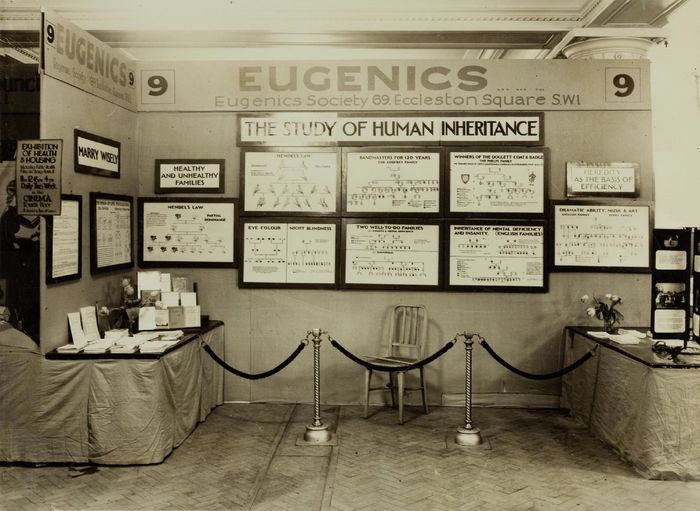Mastering first impressions: How your brain sizes up strangers in 7 seconds
Laura Nassar goes through the science behind first impressions and how we can enhance them

Whether you are attending an interview for a job, going on a first date, or just meeting people at the bar, the first seven seconds are your make-or-break moment. The people you meet will already have decided whether you could be their new best friend, arch nemesis, an awkward acquaintance to avoid, or quite possibly, the love of their life. Well, isn’t that just a bucket of joy?
The notion that you can size up a human in the same amount of time it takes to forget why you walked into a room is ridiculous, yet we all subconsciously do it. Psychologists refer to these seven-second verdicts as “thin slices of judgement”. Within these meagre few seconds, your competence, trustworthiness, and likability will have been evaluated to name a few. Some studies have even suggested that these traits are gauged within 39-100 milliseconds! Doesn’t seem fair, does it?
Fear not! Here is a science-backed guide for how to flaunt your plumage like a peacock at a poultry pageant (but not in a cocky way, of course).
Why do our brains work like this in the first place?
It has been suggested that these flash judgements have important evolutionary roots. Our ancestors’ ability to make rapid assessments was an essential survival skill. Imagine living in a cave, where every rustle or sound could herald friend or foe. Hesitation would be a fatal flaw. Our brain evolved to be a high-speed processing machine, quickly categorising stimuli as malignant or benign. In addition, the stakes in courtship were high; choose the wrong mate, and the consequences would be dire. A mate who can’t outwit a squirrel or find food would leave you to raise offspring with the wisdom of a worn-out flipflop - and that’s if you survive long enough to have them in the first place. In other words, our thin-slice judgements may have evolved as part of natural selection, which lingered through the ages.
“Your first impression of other people will shape their first impression of you”
What happens in our brains during those 7 seconds?
The process of forming first impressions activates a network of brain regions associated with social cognition. The amygdala works together with the prefrontal cortex, which are responsible for emotional processing, and decision-making respectively. Studies employing functional magnetic resonance imaging (fMRI) have found that these areas of the brain are activated within milliseconds of seeing a new face. Interestingly, different sections of the brain exhibited differing levels of activation depending on whether the subject deemed the face trustworthy, competent, or aggressive (and vice versa). Again, within milliseconds!
But how can you use neuroscience to enhance first impressions?
What you see in others, will be seen in you:
The first, and most important point to remember is that first impressions are feedback loops. In other words, your first impression of other people will shape their first impression of you. Therefore, unless your gut is strongly signalling discomfort or danger, it would be worth taking a moment to challenge your instinctive judgements. Otherwise, you may set off a chain reaction: your brain makes baseless negative assumptions about a new person, which is then reflected in your demeaner and facial expressions (despite your attempt at neutrality). The other person will detect these micro-expressions and will likely respond with the same energy. You’ll be sitting in your “I knew it” bubble, convinced they’re as friendly as a wasp in your sock. But in truth, this is not a judgement that you have confirmed, it’s a judgement that you have sculpted with your biases and brought to fruition. So make a habit of being mindful of your judgments during the first few minutes of meeting other people, and you may form surprising relationships.
“Bring up the things you have in common right at the start of the meeting, and you’ll have the person practically pre-programmed to enjoy your company”
Master the art of emotional contagion:
Building on what we were just discussing, emotional contagion is a powerful phenomenon where one person’s emotions and behaviours trigger the same ones in another person. Before you even meet someone, make a conscious decision to adopt a positive demeanour. When you smile (a genuine smile) while meeting a new person, not only are you setting a positive tone for the interaction, you’re also activating “mirror neurons” in their brains, compelling them to do the same. So this isn’t just about being friendly; it’s about engaging the other person’s subconscious mind, encouraging a symbiotic interaction. This approach isn’t just a social trick; it’s a neuroscience-backed method to foster meaningful, enjoyable connections.
Employ cognitive priming:
Cognitive priming is a fascinating strategy in psychology that shapes how others perceive you, by subtly influencing their mind at the start of a meeting. You can easily prime someone’s perceptions by aligning the environment or initial topics of conversation with positive mutual associations. Mention a popular TV show, bring up a local sports team, or drop a name you both know. Slipping a little familiarity into their mental gears will prime their brains, making them more likely to feel a connection to you. If you have an important first-meeting coming up, maybe ask a mutual friend about the person’s interests, or look them up online (in a non-creepy way). Bring up the things you have in common right at the start of the meeting, and you’ll have the person practically pre-programmed to enjoy your company.
Attire:
We can’t end a guide on first impressions without mentioning attire; which is especially important for interviews. A dozen observers in a study were able to accurately predict whether 59 candidates were offered jobs based on just the first 20 seconds of the interview (before the candidates even speak!). This was concluded to be based on facial features, micro-expressions, and you guessed it, clothing choice. It turns out that a sharp tie or sleek blazer whispers louder than the silent allure of physical attractiveness. Attire subtly presents qualities such as professionalism, attention to detail, and creativity traits that employers subconsciously align with job performance. It would be best to dress for interviews as though you already have the job. Do a little detective work on the company’s culture and day-to-day dress code, and notch it up a step.
Next time you’re up for making a first impression, just remember, it’s easier than you think. Dress sharply, smile genuinely, and engage with a touch of psychological insight.
 Comment / Cambridge is right to scrap its state school target1 May 2024
Comment / Cambridge is right to scrap its state school target1 May 2024 News / Academics call for Cambridge to drop investigation into ‘race realist’ fellow2 May 2024
News / Academics call for Cambridge to drop investigation into ‘race realist’ fellow2 May 2024 News / Gender attainment gap to be excluded from Cambridge access report3 May 2024
News / Gender attainment gap to be excluded from Cambridge access report3 May 2024 News / Emmanuel College cuts ties with ‘race-realist’ fellow19 April 2024
News / Emmanuel College cuts ties with ‘race-realist’ fellow19 April 2024 Lifestyle / Scouse prins and purple bins: notes on missing the North2 May 2024
Lifestyle / Scouse prins and purple bins: notes on missing the North2 May 2024





